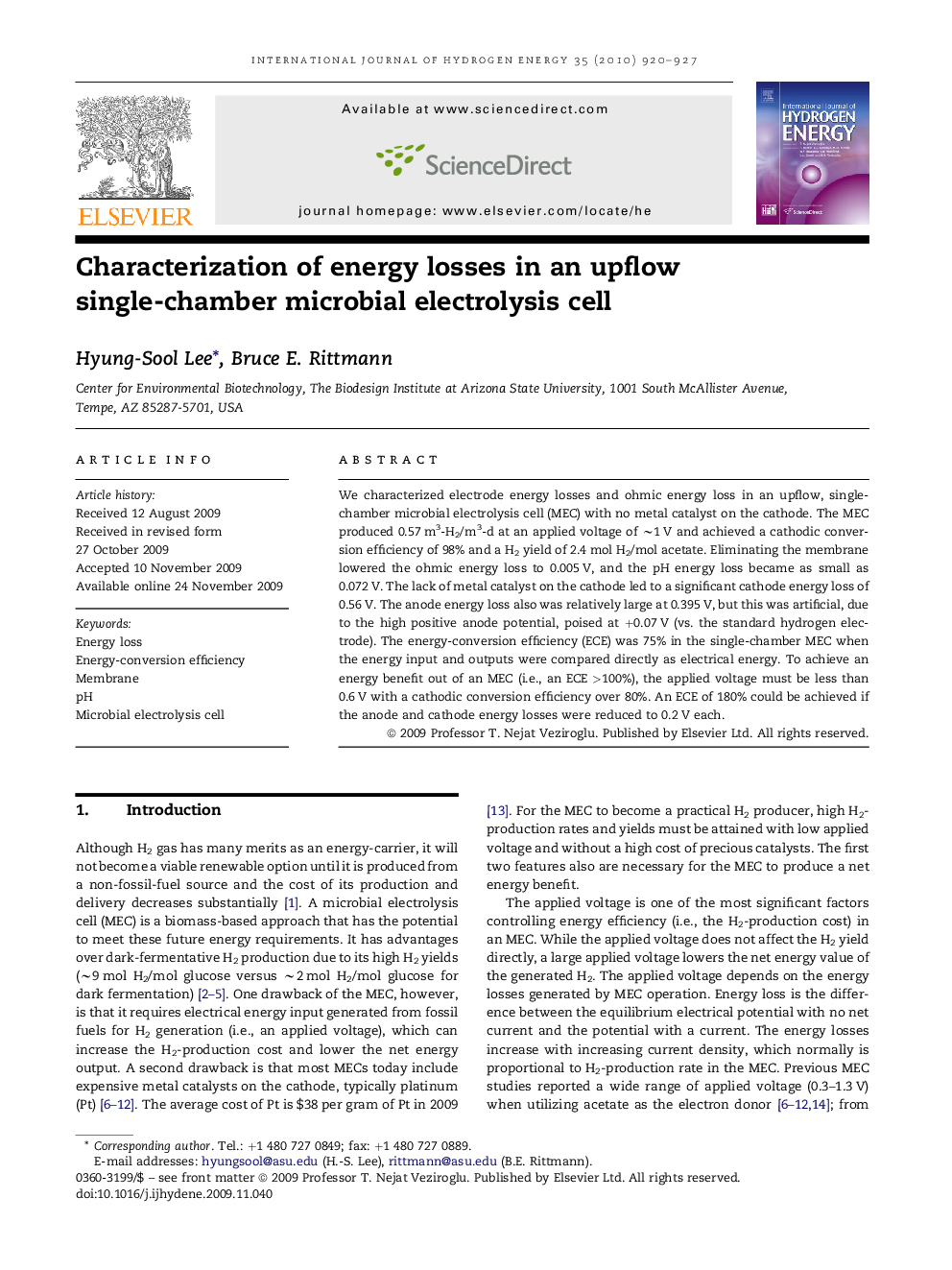| Article ID | Journal | Published Year | Pages | File Type |
|---|---|---|---|---|
| 1273482 | International Journal of Hydrogen Energy | 2010 | 8 Pages |
We characterized electrode energy losses and ohmic energy loss in an upflow, single-chamber microbial electrolysis cell (MEC) with no metal catalyst on the cathode. The MEC produced 0.57 m3-H2/m3-d at an applied voltage of ∼1 V and achieved a cathodic conversion efficiency of 98% and a H2 yield of 2.4 mol H2/mol acetate. Eliminating the membrane lowered the ohmic energy loss to 0.005 V, and the pH energy loss became as small as 0.072 V. The lack of metal catalyst on the cathode led to a significant cathode energy loss of 0.56 V. The anode energy loss also was relatively large at 0.395 V, but this was artificial, due to the high positive anode potential, poised at +0.07 V (vs. the standard hydrogen electrode). The energy-conversion efficiency (ECE) was 75% in the single-chamber MEC when the energy input and outputs were compared directly as electrical energy. To achieve an energy benefit out of an MEC (i.e., an ECE >100%), the applied voltage must be less than 0.6 V with a cathodic conversion efficiency over 80%. An ECE of 180% could be achieved if the anode and cathode energy losses were reduced to 0.2 V each.
